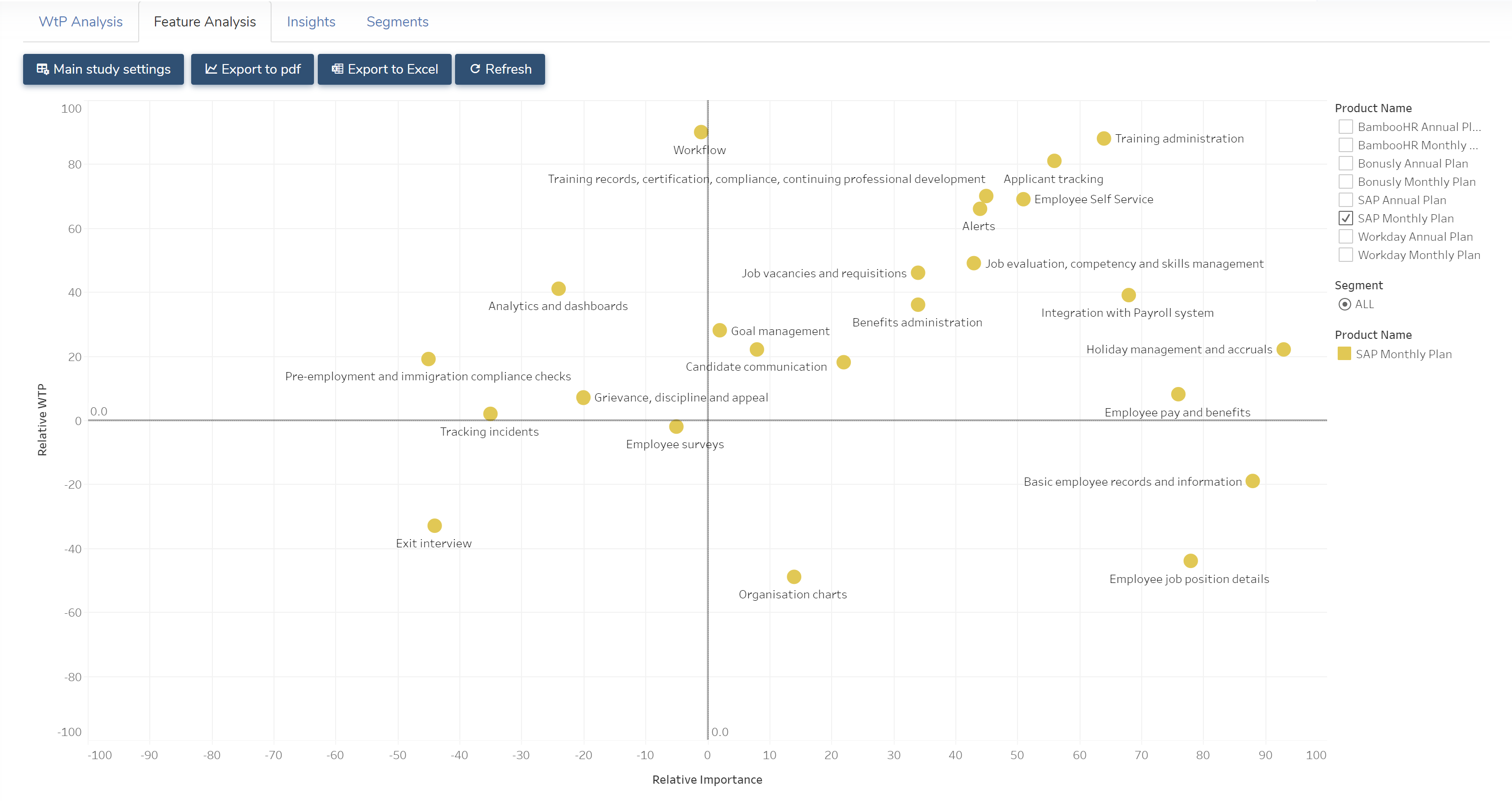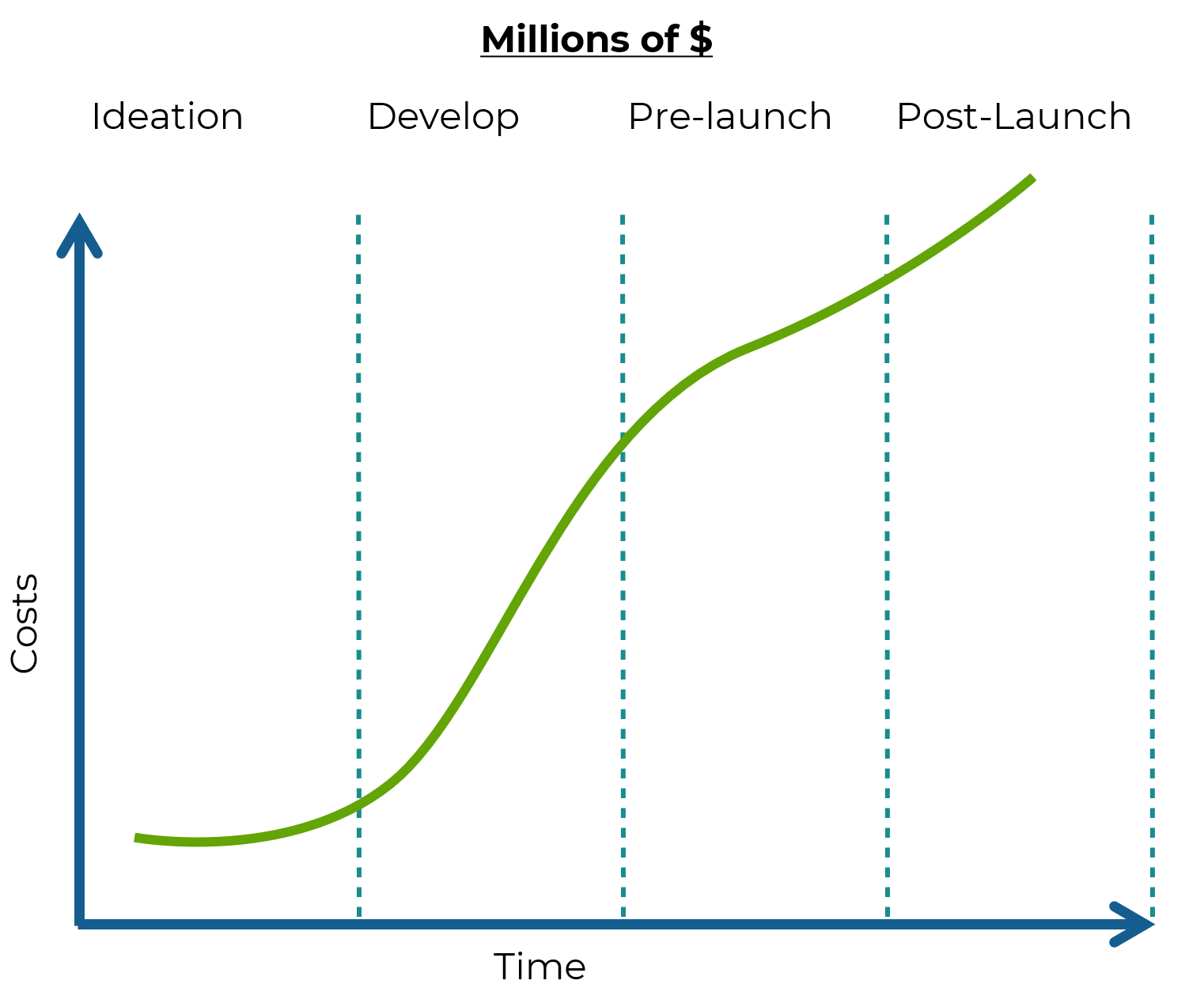10 Pricing Areas that Marketing Should Care About
 PriceBeam
·
5 minute read
PriceBeam
·
5 minute read

Who owns the pricing discipline in your company? Who should own it? Some organizations have dedicated "Pricing" or "Revenue Growth" departments, whereas others leave it to the classical departments of Finance, Sales or Marketing. This article suggests that regardless of where the responsibility lies today, Marketing should be heavily involved and more often than not "own" the price setting process.
Conversely, the marketing team should also take ownership and not shy away from the pricing discipline. Pricing is one of the classical 4P's as described by famous professor and author Philip Kotler. Price sets the tone of the brand. Price is important.
1. Know what your end-customers / consumers are willing to pay for your brand, products and services
Do you know what consumers (in B2B the end-customers) are willing to pay for your product or service? What features and benefits do they appreciate and value? What features are of little value to the consumers? This is Marketing 101 and should be part of any marketers core knowledge about her/his brand. With knowledge and insights about WtP, new products can be developed. With knowledge and insights about WtP, communication plans can be developed. Existing targeted audiences can be enticed, and new consumer segments targeted.
2. Know the value drivers that set your brand apart
OK, so you know what consumers are willing to pay for your brand. Good start. But does it set your brand apart? What values, features, and benefits do your products have that the competition doesn't? and vice versa?
A useful tool to understand the value of features or benefits (remember the brand itself is also a feature) is PriceBeam's Feature Value Matrix:

The FVM looks at individual features or benefits and then maps against how many people in the target market are interested in them, and how many are willing to pay (more than average) for them. For innovation teams this is critical to determine future offerings.
3. Communicate value through price
High price = premium product. Low price = low quality. Of course this is not always 100% the case, but more often than not, this is how customers think. Or how their peers think when seeing that a friend or family member has bought such a product.
So why do we again and again see that Marketing communicates "we are the best" across all channels yet pricing is discounted or at the mercy of either Sales or Finance?
4. If Brand = Price, then why are you leaving price increases to Finance?
See #3. Enough said ;-)
5. Consumer/Customer Recruitment, Retainment & Disbandment
If a customer pays 10 but thinks she gets value of 15, then it is a good value. She is likely to buy again and also refer her personal network to the brand. Positive recruitment and retainment. If another customer pays 15 but thinks he gets value of 10, then it is considered bad value, and not only will he most likely not buy again, but he may also spread negativity.
Marketing often finds it to be a priority to convey the value, but without the benchmark of willingness-to-pay and price points, the whole exercise is futile. Also, very often different customer segments have willingness-to-pay and thus marketing communication should be differentiated accordingly.
6. Value Segments
One customer segment may want to chase good deals and never wanting to pay more than $10, whereas a different segment might want "better quality" and be willing to pay $15, whereas a third segment could actually be willing to pay $20 if the product is "right". What are these? Value Segments, based on segmenting the market according to different levels of Willingness-to-Pay. Yes, the products need to be engineered accordingly, and the communication to each segment to be aligned with what they are looking for, but also the price must be right. Insights into prices and willingness-to-pay are essential to optimize the marketing mix to each value segment.
7. Are you spending on brand equity where such spend is due?
Imagine mapping the current price against what customers are willing to pay, for every segment, market as well as brand and product in your portfolio. Simply put:
if WtP < Current Price then your brand equity is in trouble
If WtP > Current Price then your have great brand equity and Pricing Power
With Pricing Power comes the ability to grow the customer audience (they see great value when buying), increase prices if desired, and also a fact-based indication that it is worth investing in the brand.
8. Packaging choices
PriceBeam does many studies where one of the objectives is to assess different packaging options and claims. This can be to see if a change in size will either change willingness-to-pay or attract new customer segments. Or see if a change in packaging to a more environmentally friendly option is not only good for the image but also something that consumers are willing to pay for. Similarly, we test different claims such as e.g. putting "organic" or "plant-based" on the pack of e.g. food products, or "Produced in [name of country]", and how these claims drive value, or sometimes don't.
Marketing will surely feel they own this space of packaging, but it cannot exist as a discipline without also taking pricing and willingness-to-pay into consideration.
9. Range optimization based on willingness-to-pay
Similar to individual packaging choices, assortment choices should also take pricing into consideration. Many consumer brands have large ranges of similar products, differentiated by e.g. flavour, colour, or ingredients. But how to determine whether to have 4, 6, 10 or 12 items in the range? Well, willingness-to-pay insights can help tremendously.
Imagine six products all with the same WtP of $5. A strong argument could then be made for that maybe not all 6 SKUs are needed or even a good idea. On the other hand, imagine 6 products with a range of willingness-to-pay levels, starting from $4 to $9, then each of the products in the portfolio have a role to play in terms of value. Some consumers will go for the item at $4 and others for those at $8 or $9, leading to better market targeting and optimization of value and revenue.
10. New product value testing & price setting
In many industries the amount of new products developed and launched every year is staggering. In CPG/FMCG it is quite common to see maybe 20% of the products on shelf in retail in a given category to be new every year. Yet still, research from Harvard Business School shows that 85% of all new product launches fail to meet their objectives, very often because of a misalignment between the market's willingness-to-pay and the price.
Innovation teams can benefit tremendously by taking into account consumer willingness-to-pay much earlier in the product development process. Let's look at the costs of making pricing mistakes at different points in time:

If you have already have launched the product and then find out that the price doesn't match the market's willingness-to-pay, then it is bound to be very costly. "Fixing" the price just before the launch is not much better: for global brands this is certainly many millions of dollars in corrective costs, or quite possible a complete recall.
The point is that the sooner Innovation/Marketing can collect insights into consumers' willingness-to-pay about potential new features or entirely new products, the better it is. Even hundreds of concept tests for willingness-to-pay early in the process will cost a fraction of correcting pricing mistakes post-launch, not to mention much better overall time-to-market, avoidance of embarrassment and improvement of competitive position.
With modern pricing insights platforms like PriceBeam, such innovation tests can be done in 1-2 weeks and will typically cost less than $1000 per test concept. When this is furthermore available in 127 countries, it should be an essential tool for Marketing and Innovation teams.
*****
If you would like to understand more about how to quickly and easily to collect insights into consumers' willingness-to-pay, get in touch with the PriceBeam team and see how we can help you.
.png?width=400&height=100&name=PBLogoTransparent%20(1).png)



